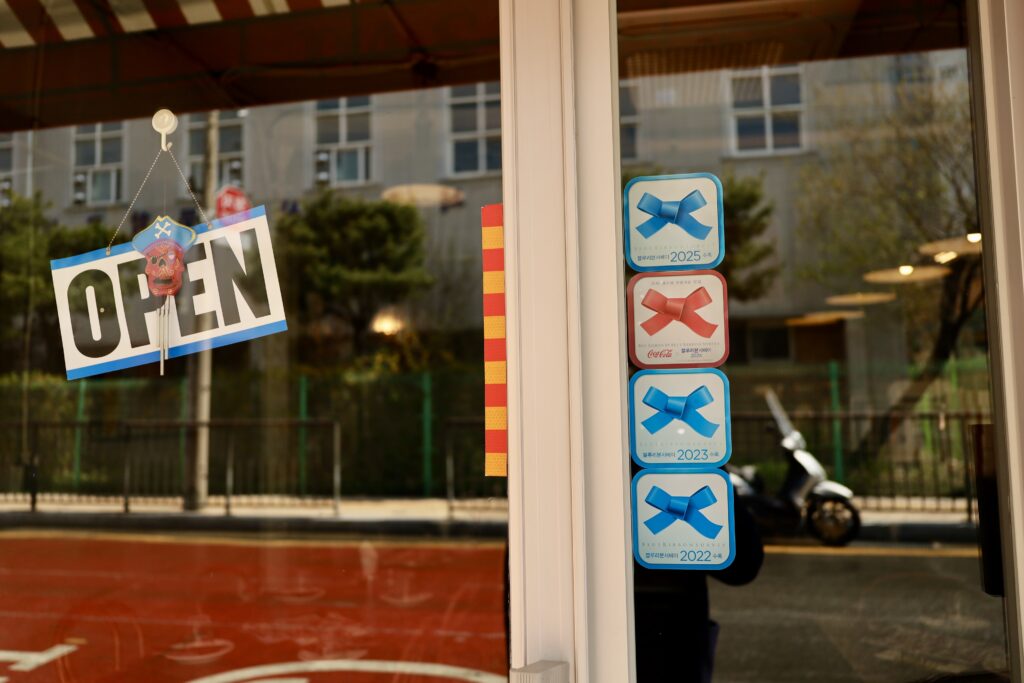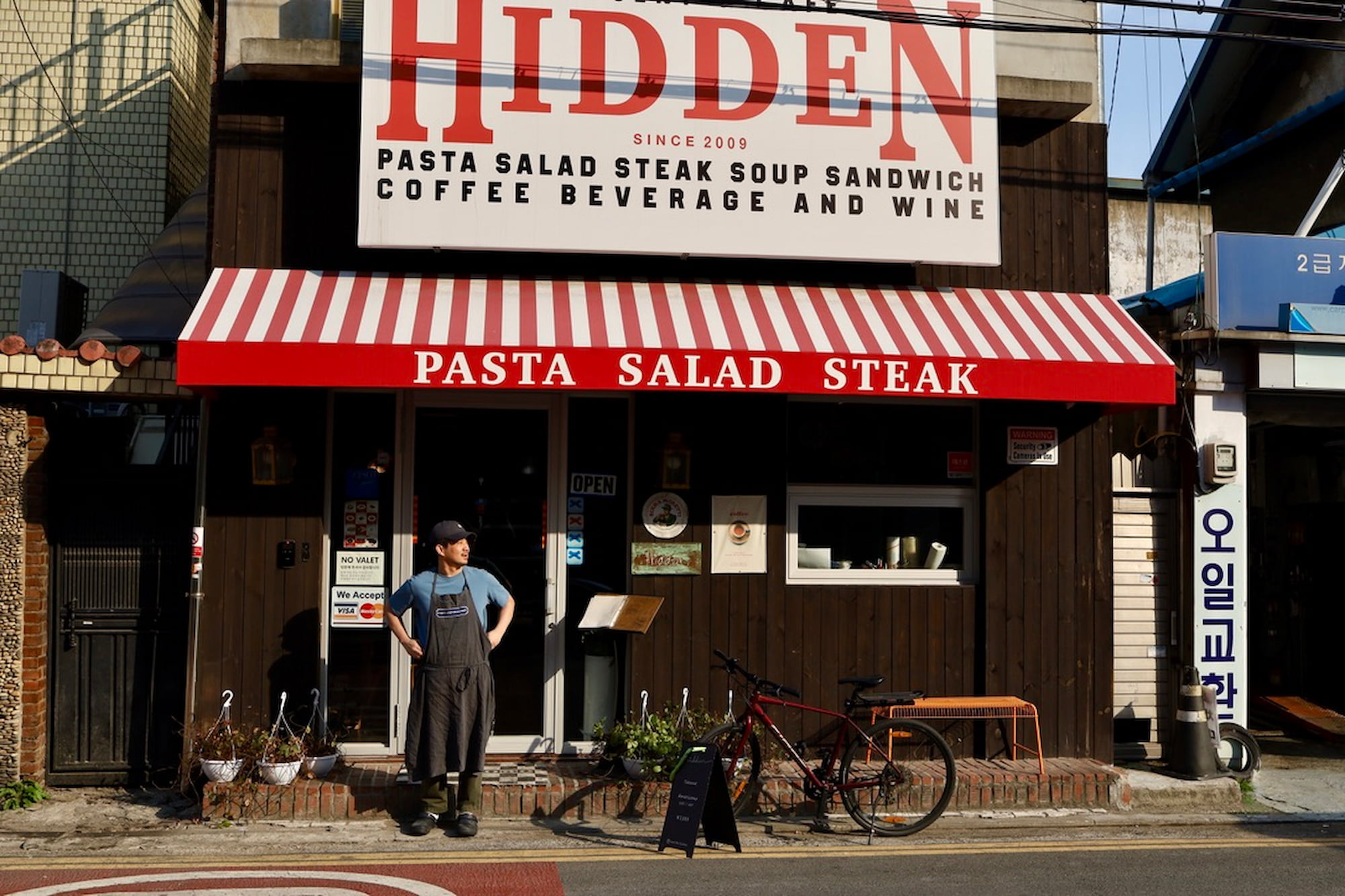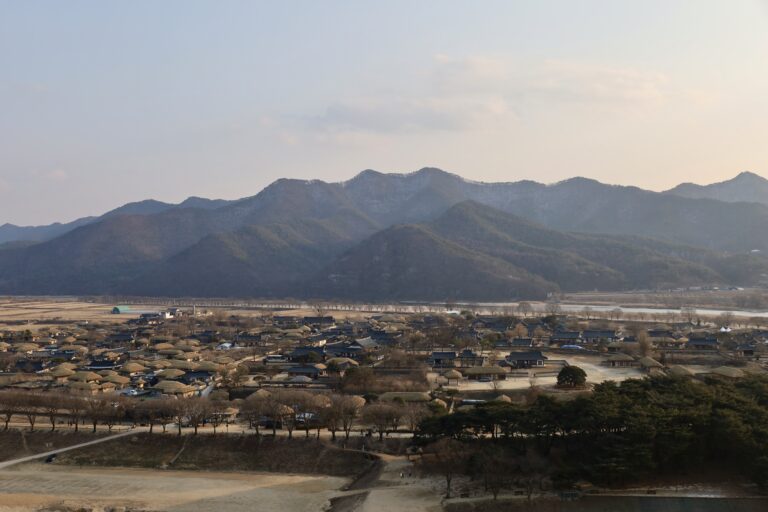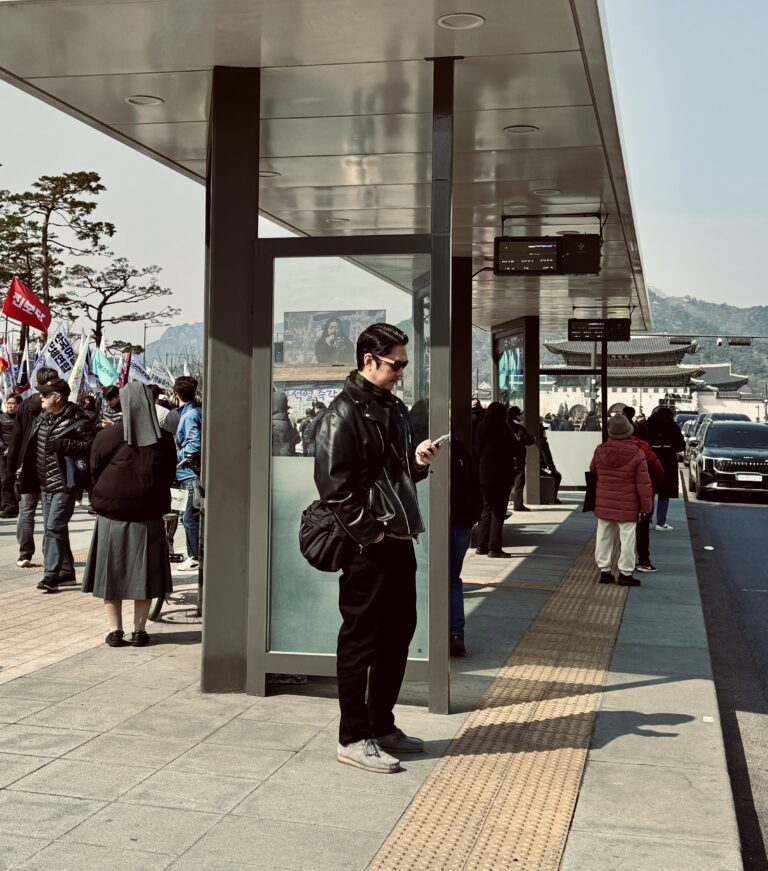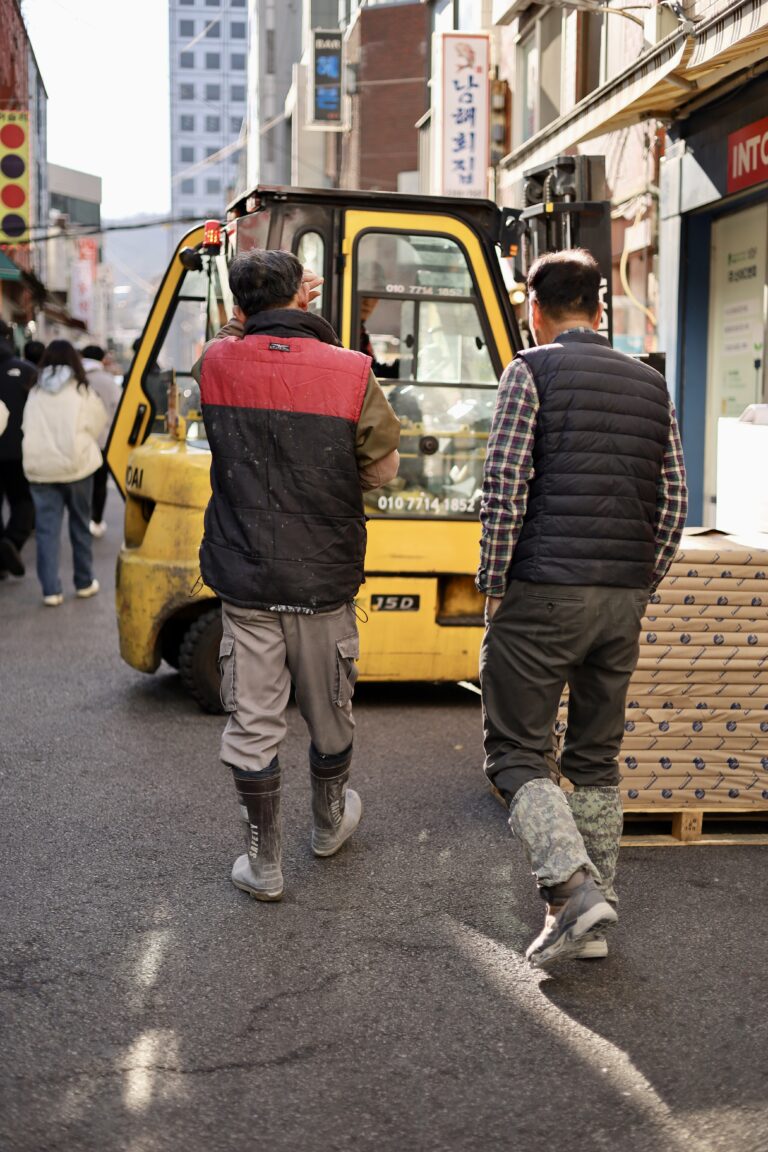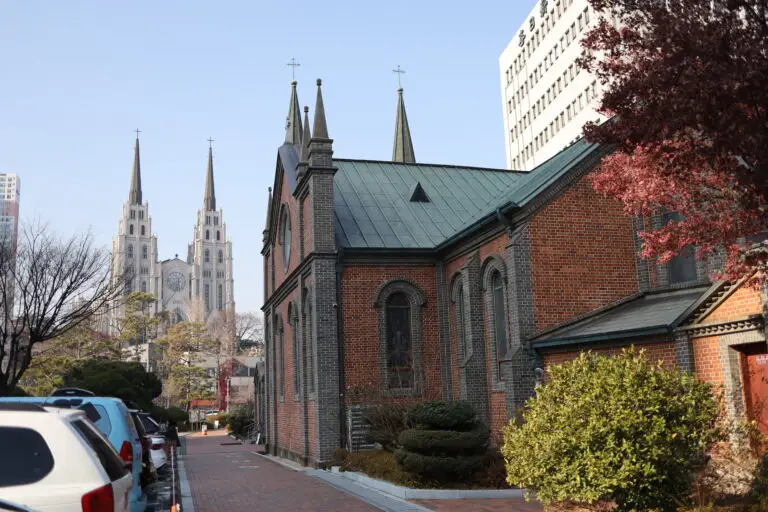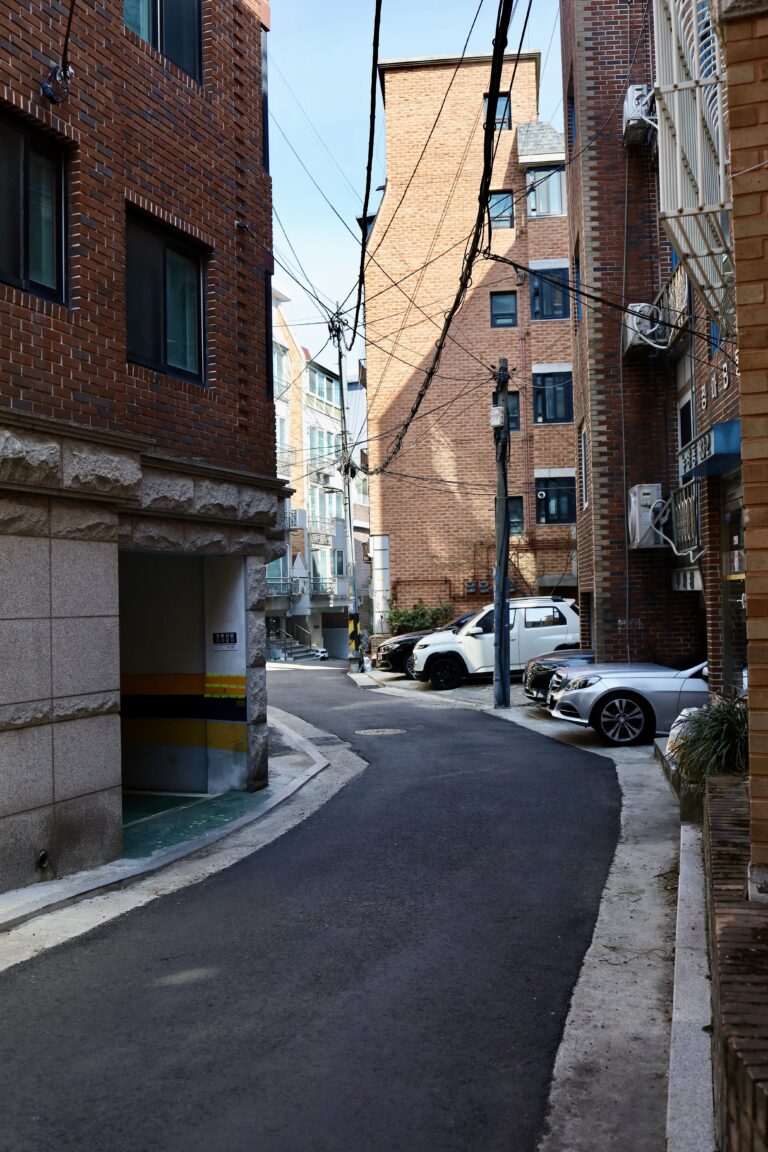A Room of His Own: Chef Lee Joo-hwan’s D’asti Across Time
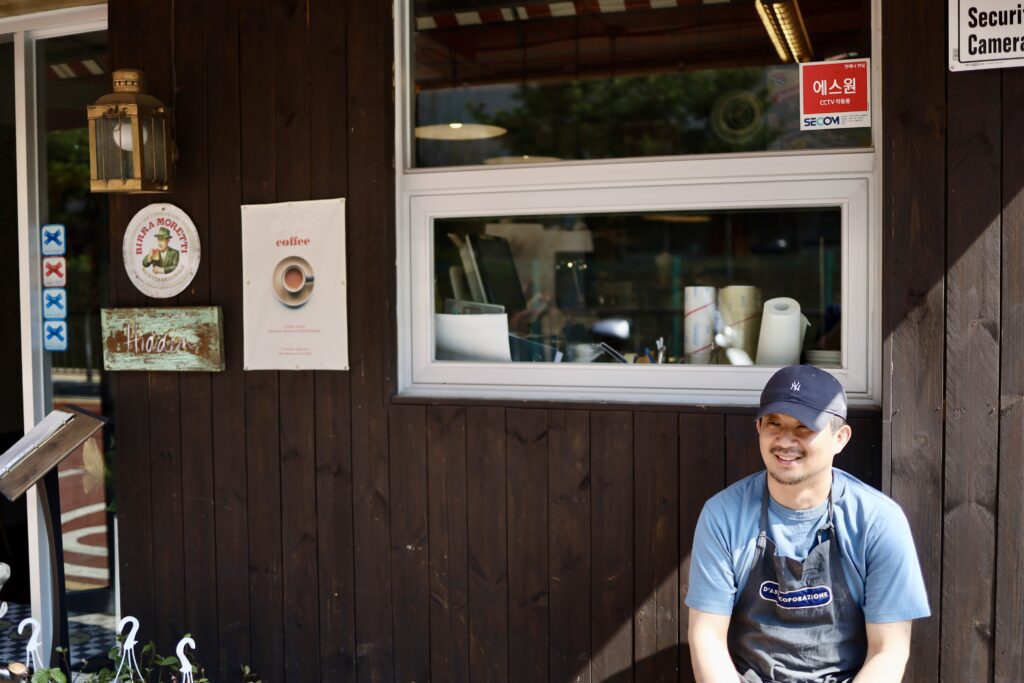
“This isn’t a date-night pasta place. It’s where you show up in slippers and eat something honest.”
A minute’s walk from Samgakji Station’s Exit 6, D’asti the Hidden faces an elementary school across the road — a quiet slice of the city where horns fade, children’s voices carry, and time feels slower. It’s calm here — far removed from the trendy cafés and weekend crowds of the opposite side of Samgakji, now known as “Yongridan-gil.”
Inside, Chef Lee Joo-hwan moves with quiet focus. He prepares every dish himself, assisted by one or two part-time staff who help with serving and cleaning. This isn’t a performance kitchen. It’s an everyday rhythm. Honest, unforced, consistent.

The name D’asti comes from Asti, a small town in northern Italy known for its sweet sparkling wine, Moscato d’Asti. But for Chef Lee, Asti wasn’t about wine — it was where he trained, struggled, and ultimately committed to cooking.
“I spent a year in Asti. It was harder than the military,” he says. “But I learned how to cook properly there, for real.”
Naming his restaurant D’asti was both a tribute and a compass: a reminder of where it all started, and how far he’s come.
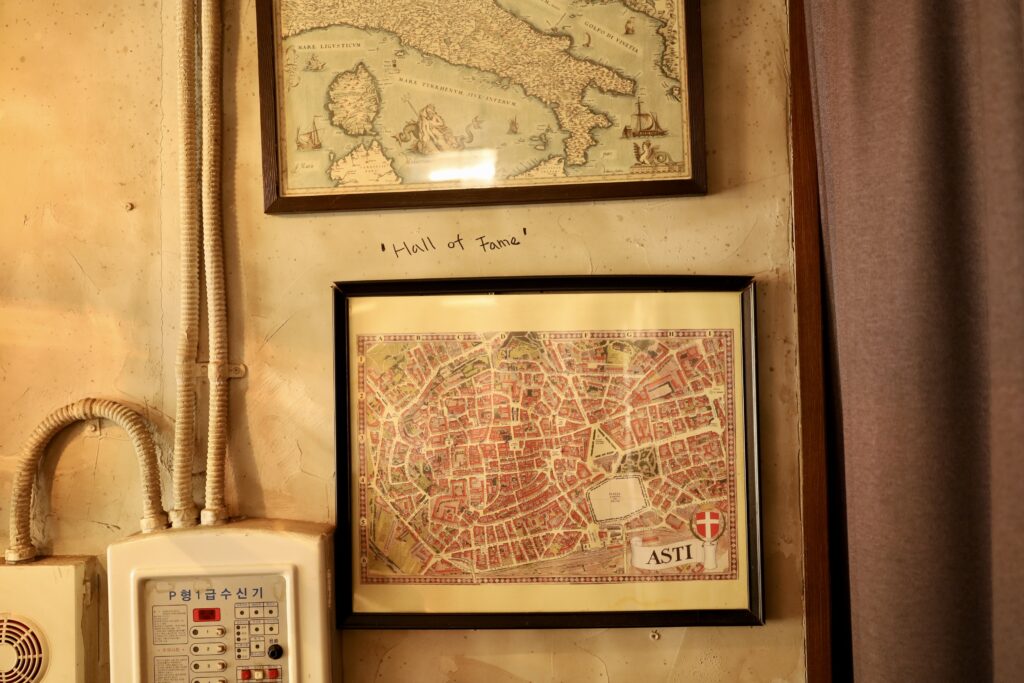
From Garosugil to Samgakji: The Four Lives of D’asti
Each version of D’asti has marked a distinct phase of Chef Lee’s life: its ambitions, its failures, and its eventual clarity.
Phase 1: D’asti — Garosugil (2009)
The original D’asti opened during the golden era of Garosugil and its sister street, Serosugil — a time when the neighborhood was booming with energy and trend-seekers.
“Taste back then was about good looks,” Lee recalls. “I cared a lot about how I was seen. I was in my early thirties, unmarried, and riding that wave. I had nothing to lose.”
He served simple, home-style Italian in a cozy, welcoming space. The restaurant found success quickly — but too quickly, he now admits.
“I hadn’t struggled for it, and that made me careless. I thought I understood everything.”

Phase 2: D’asti Plate & Elly’s Alley — Garosugil (2011)
As D’asti’s popularity grew, so did investor interest. Lee partnered with a team he trusted and opened D’asti Plate, a larger, more upscale venue just around the corner. At its peak, the kitchen ran with six chefs.
But then came a hasty move: he opened Elly’s Alley, an American-style dining pub, directly across the street — on the advice of another investor.
“It was too much, too fast. I couldn’t manage both. The two restaurants ended up competing with each other, and I couldn’t give either the attention they needed.”
Elly’s Alley folded within a year. D’asti Plate lasted four before closing.
Phase 3: D’asti NY — Namyeong-dong (2014)
Namyeong-dong today is a destination for Korean-style bistros and chef-driven spots. But back in 2014, it was a gritty neighborhood of budget stew shops and no Italian presence whatsoever.
“I knew fine dining wouldn’t work there. So I went the other way. Like a Korean pojangmacha but for pasta.”
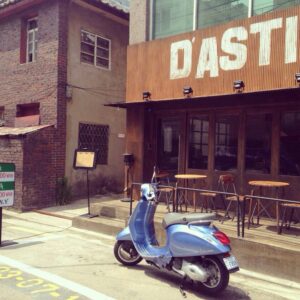
D’asti NY served good Italian food at very low prices. Wine by the bottle started under 20,000 won. Neighbors dropped by casually — no reservations, no occasion needed. It popularized Italian food in a place where it had never existed.
“But the space was too small. Not enough tables to make it sustainable. Even working nonstop, there just wasn’t much left at the end of the day.”
Phase 4: D’asti the Hidden — Samgakji (2018–Present)
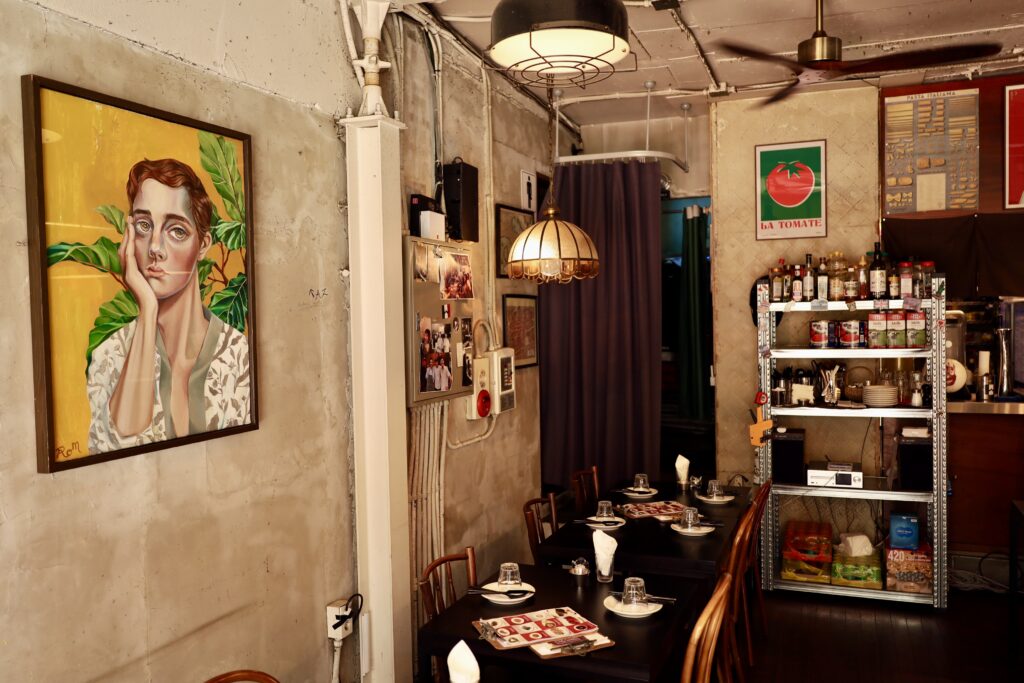
Now in its fourth life, D’asti the Hidden is where Chef Lee’s identity has fully come into focus. Originally operated with a team of three, it gradually transitioned into a solo act — not by design, but through necessity.
“At one point the other chefs left, and I just kept going. And then I realized — I could do it.”
He still believes the best kitchen has three people, so two can lean on each other when things get tough. “They can vent about the boss, encourage each other. When it’s just two, it’s too hard.”
But for now, he cooks alone — and he cooks everything. And somehow, it works.
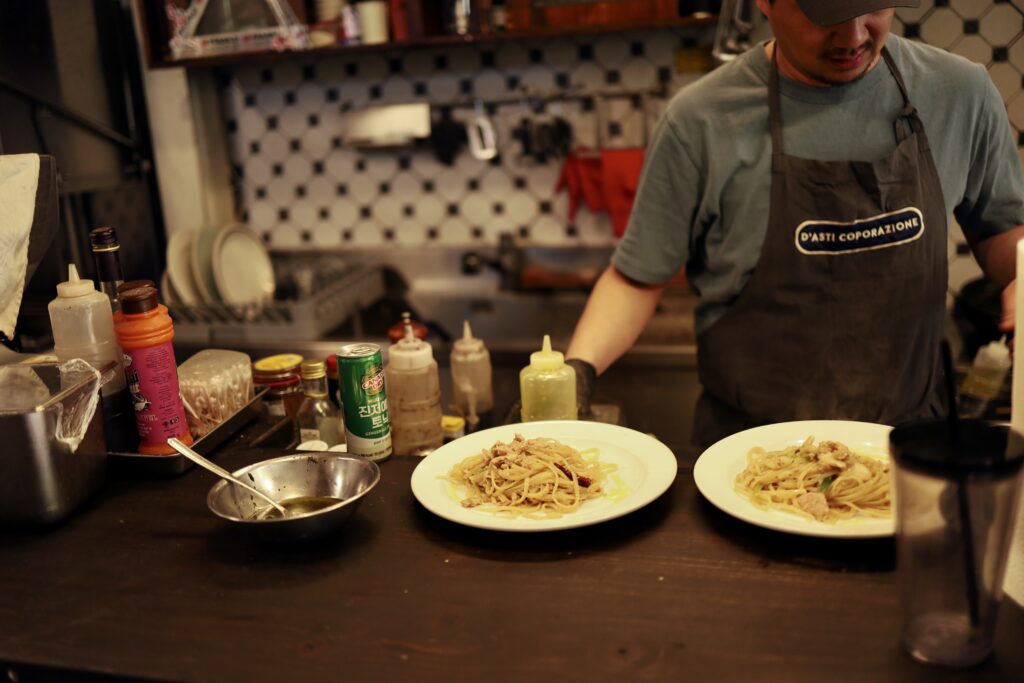
Italian Foundations, Korean Spirit
Lee studied for a year at ICIF, a culinary institute in northern Italy, before interning at Ristorante Delle Antiche Contrade, a Michelin-starred restaurant in the Piedmont region.
“It was brutal. Way harder than the army,” he laughs. “Five kitchen staff, strict discipline, and I was mostly doing dishes and cleaning. But I learned everything by watching.”
There, he absorbed the northern Italian way: simple ingredients, careful technique, respect for meat and butter, and the importance of mantecatura — binding sauce and pasta in the final stage.
After returning to Seoul, he joined Italia Mia in Apgujeong as the youngest in the kitchen, where he trained for nearly two years under Chef Andrea Zuccolo, his mentor and enduring influence. Chef Zuccolo now runs a restaurant in Udine. His portrait still hangs in D’asti.
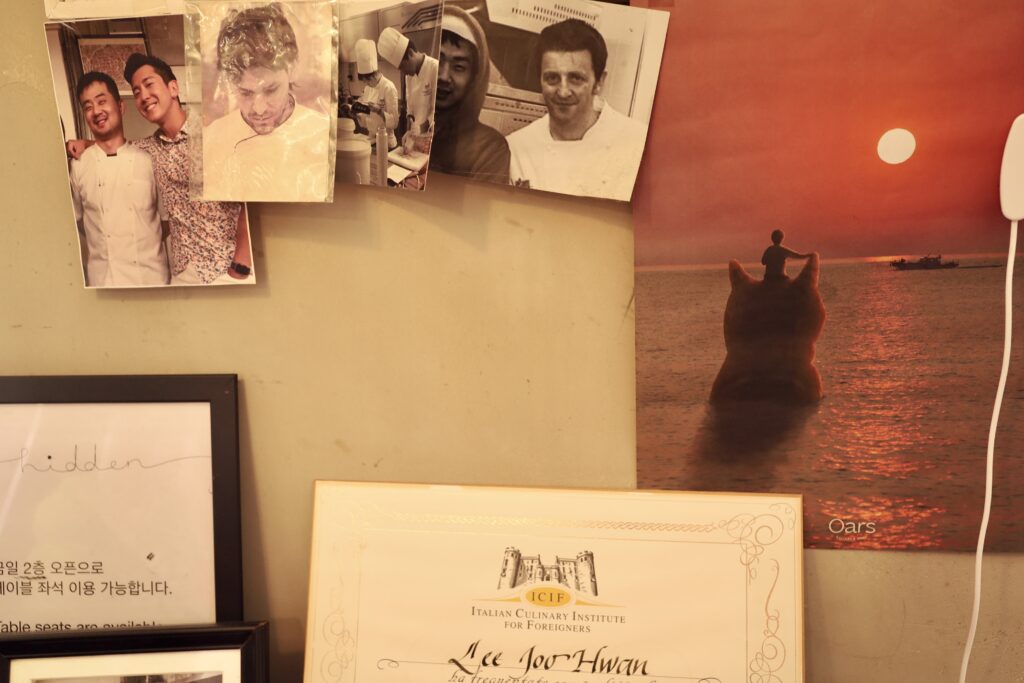
On the Menu: Rigatoni and Myeongran Oil
The menu at D’asti reflects both classic rigor and creative adaptation.
Take the bolognese. Lee serves it with rigatoni, which he considers ideal — its grooves and shape capture the sauce better than spaghetti. But if customers ask, he’ll swap in spaghettini. One regular, a middle-aged man from Australia, does just that every time.
Another standout is the myeongran oil pasta, a dish he developed during his D’asti NY days. Inspired by bottarga but constrained by cost, he began slow-cooking pollock roe aged in Buyeo’s traditional cave cellars to develop a similar richness and brininess. Unlike most Korean uses of myeongran, which lean creamy, this was oil-based — sharp, restrained, bold.
“It was kind of a breakthrough. And now it’s the most original thing I serve. People really respond to it.”

From Seoul to Soulsborne: On Cool, Control, and Dopamine
Chef Lee’s idea of Korean cool isn’t about following trends — it’s about staying in your lane. “Everyone’s trying to be everywhere. I want to be one thing, done right.”
He finds that spirit in places like Yeongcheon Market near Dongnimmun — a contrast to Seoul’s hyper-commercial Gwangjang Market.
“At Gwangjang you’ll find 40 yukhoe stalls. At Yeongcheon, it’s just one sundae place, one kalguksu place, one or two tteokbokki places. And they’re all good. There’s no duplication. Everyone respects each other’s lane. That’s what makes it cool.”
chef lee
He gets similar satisfaction from games like Dark Souls and Elden Ring, known for their punishing difficulty.
“You get dopamine only when you earn it. When you finally beat a mission, it hits hard. Life feels simpler after that.”
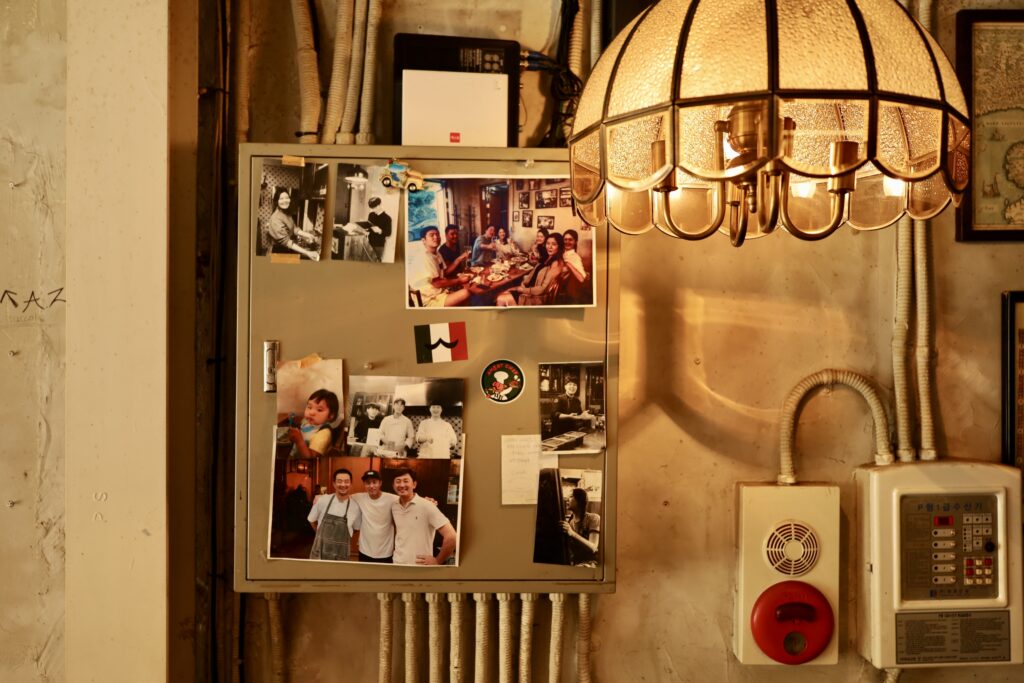
A Craftsman’s Restaurant, Built to Last
Chef Lee doesn’t believe in “concept restaurants.” He believes in survival. In places built not on buzz, but on longevity.
“I admire the nopo — those old-school restaurants that just last. That’s what I want to become.”
One restaurant he admires deeply is The Daily Catch in Boston — open since 1973, still run in its original form. “It’s not fancy. But it lasts. That’s what I want.”
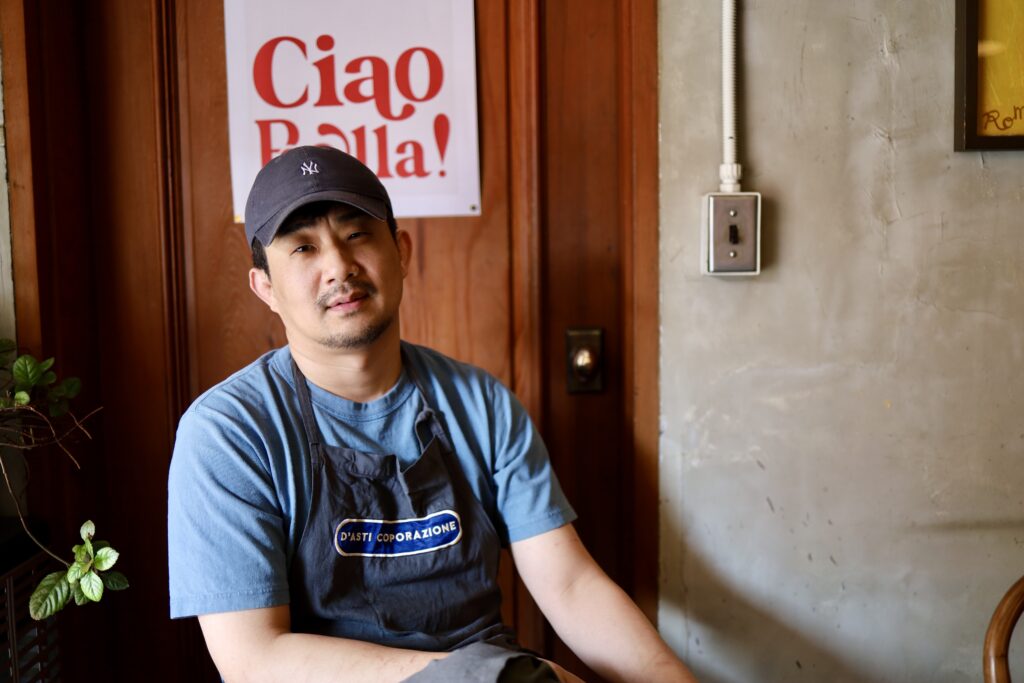
He calls himself a work in progress. But his quiet discipline, self-checking mindset, and refusal to overreach are what give D’asti its soul.
“If I could tell my younger self one thing? Start jiu-jitsu earlier. Worry less about how you look. And just stick with what you love.”
As someone who’s eaten at every D’asti — from the very first in 2009 — I can say this version is the most honest, the most precise, and the most him.
Blue Ribbon Survey has quietly recognized D’asti the Hidden since 2022. Like everything else here, the sticker speaks softly. But it sticks.
